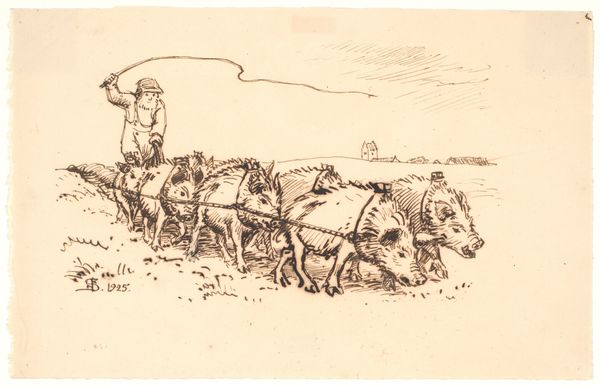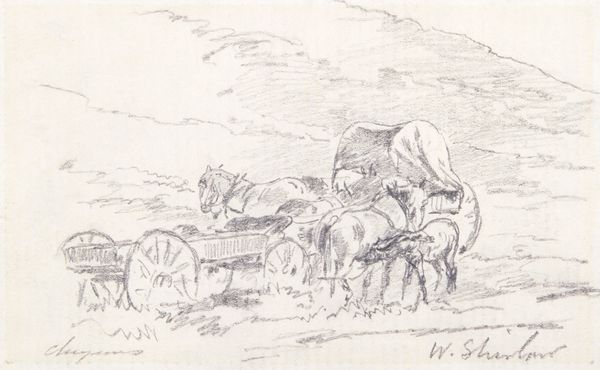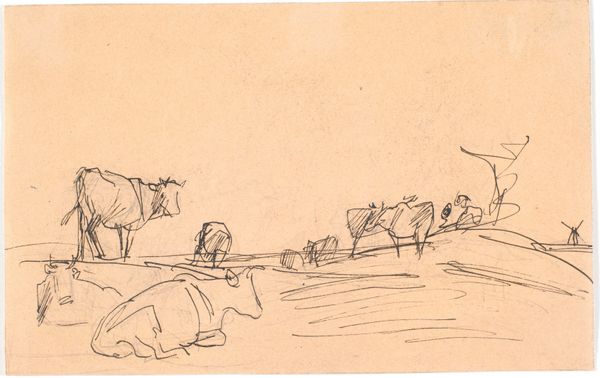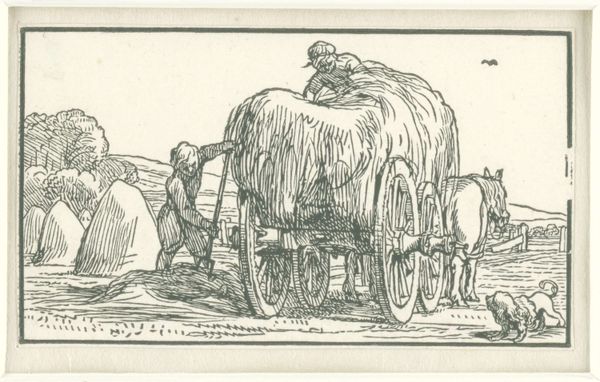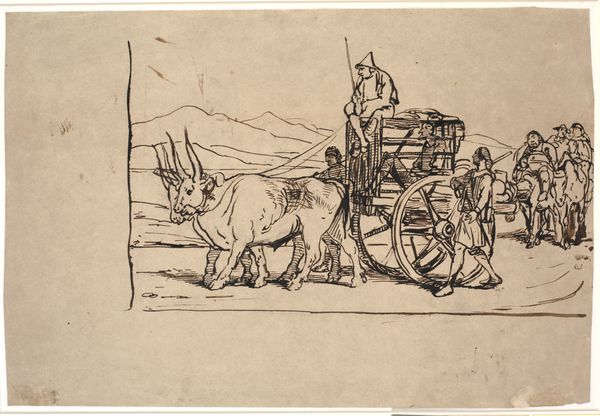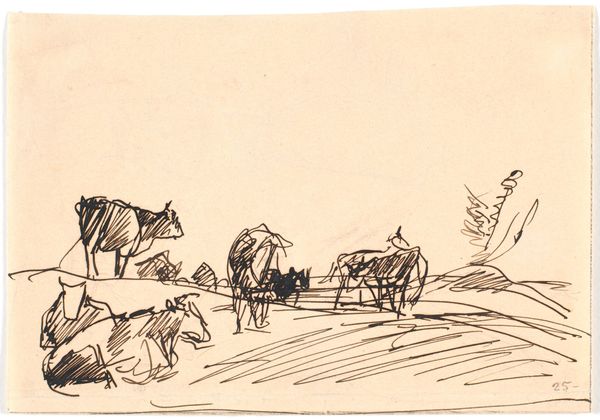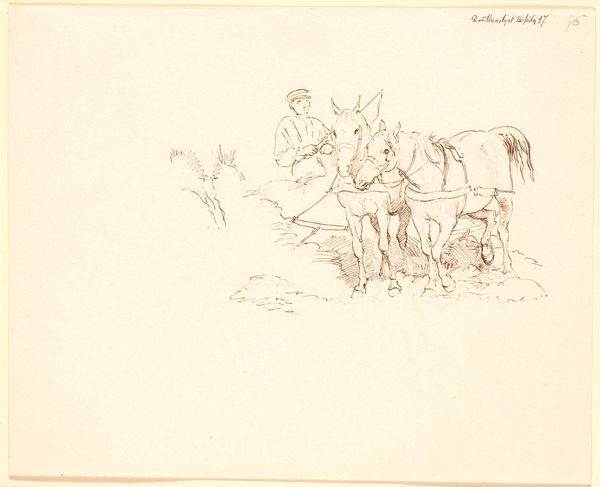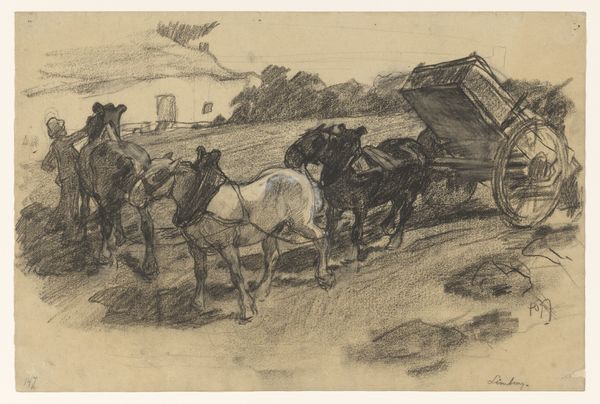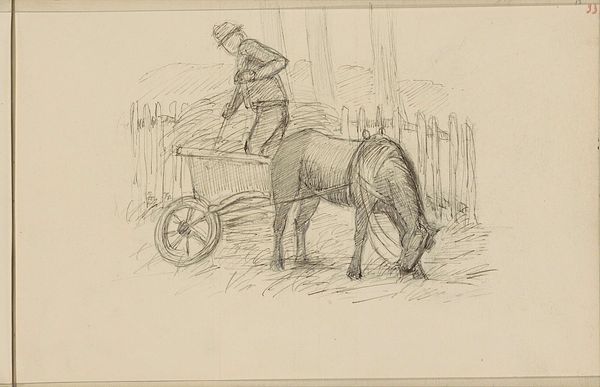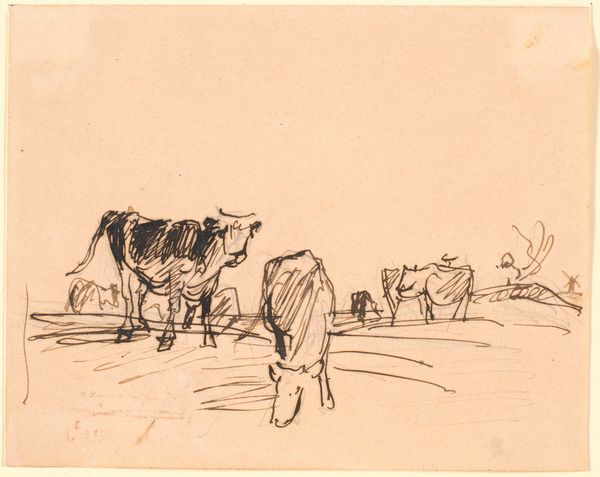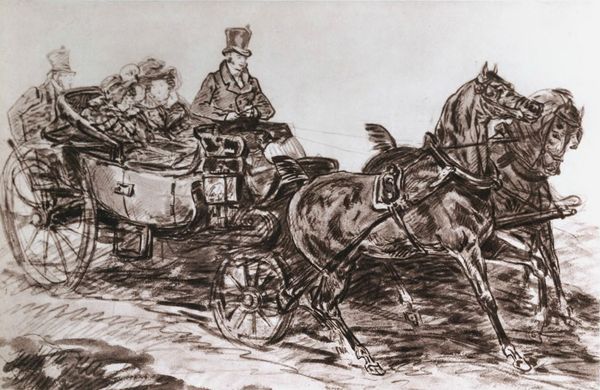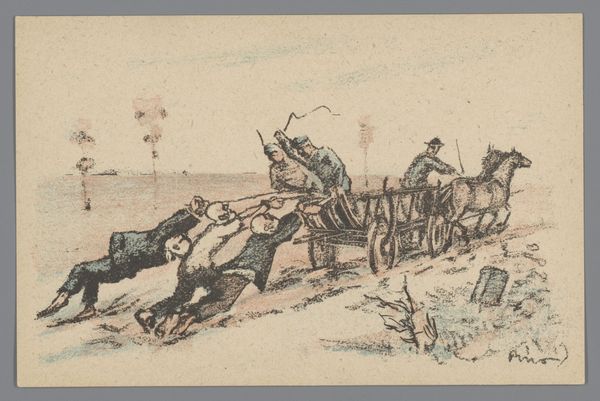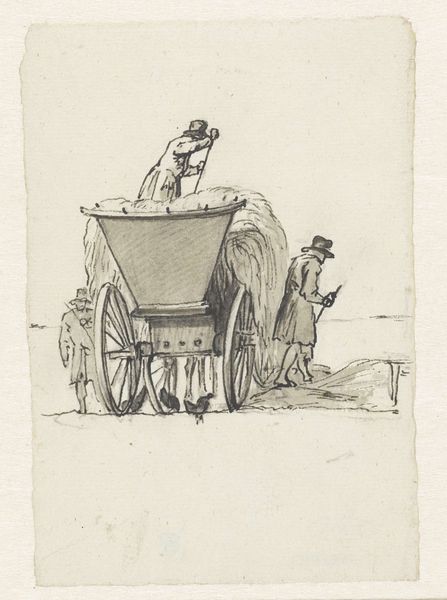
drawing, pencil
#
landscape illustration sketch
#
drawing
#
pen illustration
#
pen sketch
#
landscape
#
personal sketchbook
#
sketchwork
#
ink drawing experimentation
#
pen-ink sketch
#
pencil
#
pen work
#
sketchbook drawing
#
genre-painting
#
storyboard and sketchbook work
#
realism
Dimensions: 173 mm (height) x 265 mm (width) (bladmaal)
Curator: Here we have P.C. Skovgaard's 1852 drawing, "En bondemand gaaende ved siden af sit studekøretøj," housed here at the SMK. It’s a rather delicate sketch in pencil and ink. What's your first reaction? Editor: It feels laborious. The scratchy lines evoke a real sense of effort, not just in the drawing itself, but the physical toil depicted – the man and oxen straining. You can almost feel the weight of the wagon. Curator: Absolutely. Skovgaard was deeply invested in portraying the lives of rural laborers. We have to understand this image within the context of 19th-century Denmark. There was growing class consciousness and burgeoning nationalist movements, often intertwined, where depictions of rural life took on powerful symbolic weight. Who was allowed to participate and benefit? Editor: The lines themselves really speak to the conditions of labor and production here. Look at the way the wheels of the cart are rendered; each spoke and detail receiving focused attention. This echoes a careful craftsmanship, not just within the art but mirroring the craft involved in agriculture. The material reality is front and center. Curator: I agree. The depiction of labor and the material conditions connects to debates about national identity and belonging. Skovgaard’s presentation here constructs an image that appeals to bourgeois viewers invested in understanding this perceived essential national labor. Is this an accurate, idealized view of this labor in the creation of this art? Editor: It's crucial to consider the means of production—the paper, the ink, the artist's labor. These drawings weren't necessarily made for grand exhibition spaces but represent something of an intimate interaction between Skovgaard and his immediate environment. It bridges a connection with art and a shared labor experience. Curator: That tension between idealized vision and tangible, gritty realities is key. These sketches offer a space to both reflect on these identities and perhaps reconsider what it means to authentically represent it. Editor: Absolutely, and by paying attention to how Skovgaard materially represents this labor, it enables us to confront this relationship head-on. It’s less about a romantic, sweeping vista and more grounded to the process involved in image-making. Curator: Precisely. Engaging with artwork like this lets us better question traditional, romantic readings of both labor and belonging to more closely scrutinize a range of identities at play. Editor: For me, appreciating Skovgaard’s methods illuminates those broader historical implications. It also deepens my appreciation for the artistry on display in the seemingly mundane sketch.
Comments
No comments
Be the first to comment and join the conversation on the ultimate creative platform.
